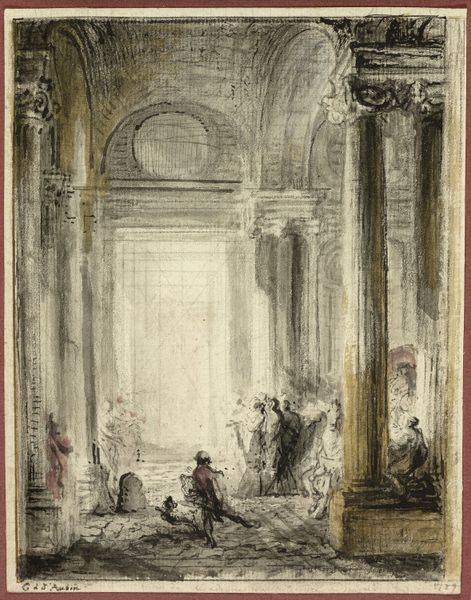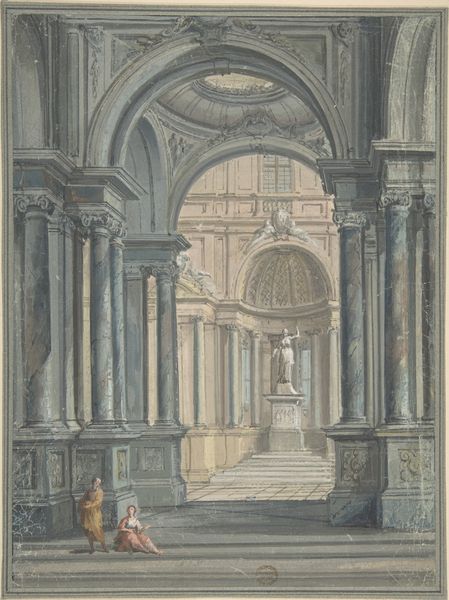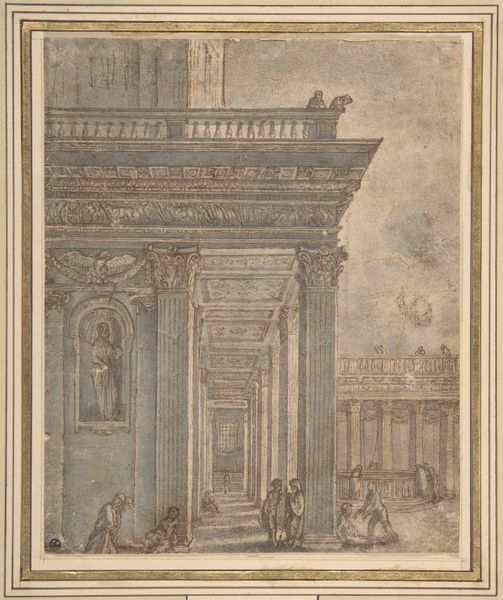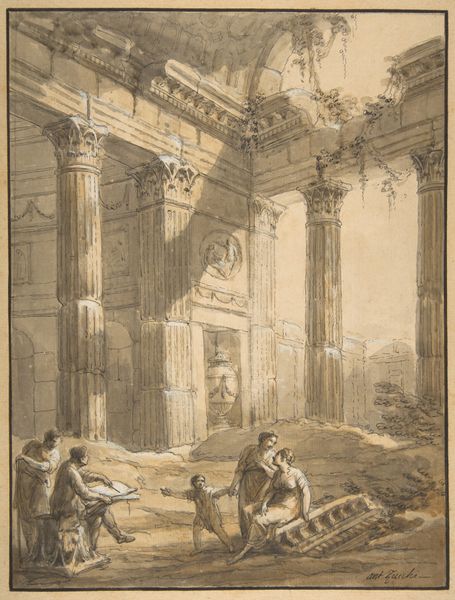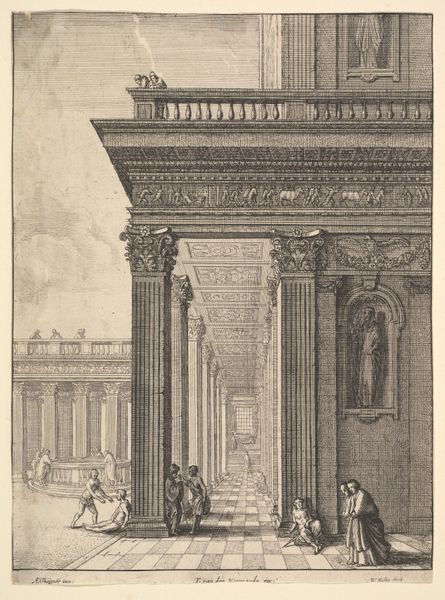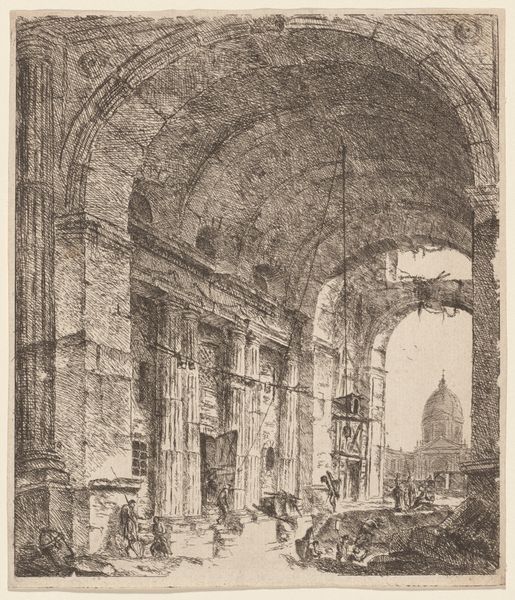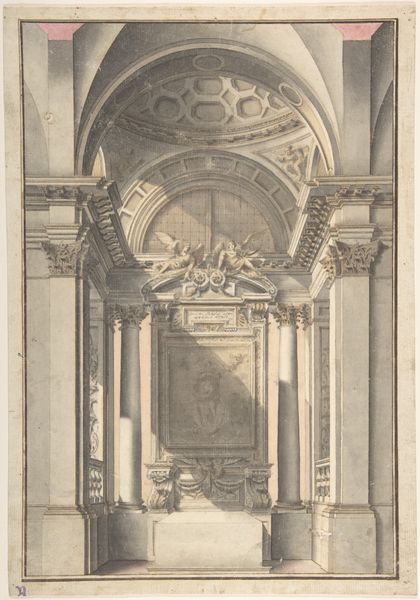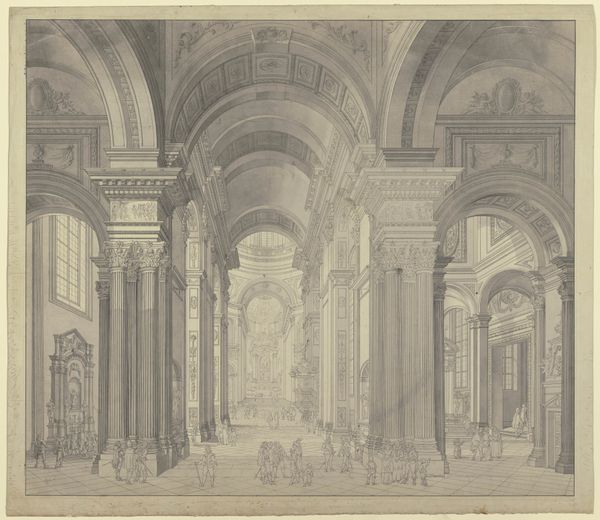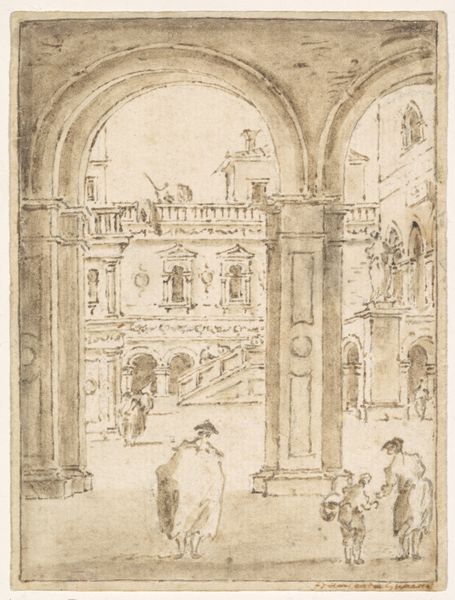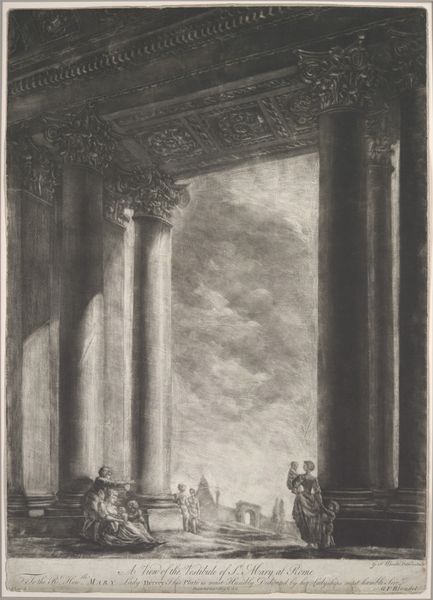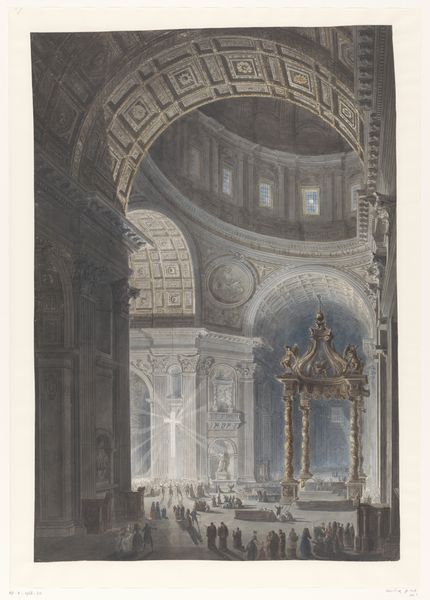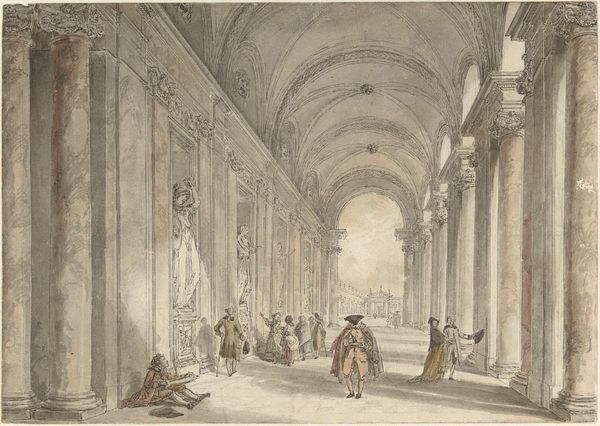
Figures in the Portico of Sainte-Geneviève le Panthéon, Paris 1776 - 1779
0:00
0:00
drawing, print, paper, ink, pen
#
drawing
#
neoclacissism
# print
#
pencil sketch
#
charcoal drawing
#
paper
#
ink
#
pencil drawing
#
pen
#
cityscape
#
genre-painting
#
history-painting
Dimensions: 7 1/8 x 6 in. (18.1 x 15.3 cm)
Copyright: Public Domain
Curator: Immediately, I’m struck by the atmosphere—it feels monumental yet fleeting, like a captured breath of classical grandeur. Editor: You've captured it perfectly. What we are seeing is Gabriel de Saint-Aubin’s, “Figures in the Portico of Sainte-Geneviève le Panthéon, Paris”, created between 1776 and 1779. It is currently held here at The Met. Curator: He uses pen, ink, and pencil on paper to convey such a vast architectural space. The raw, almost hurried strokes lend the building a ghostly presence. You feel the ambition of Neoclassicism, but also its potential to overwhelm. Editor: There's such a fascination with the materials, isn’t there? The way the light seems to dissolve the ink into ethereal washes is amazing, and look how quickly he sketched those figures. You see his own presence and movement embedded in the drawing. The scale feels deceptive; it's small, but the depicted architecture dwarfs the people. Curator: The figures animate the space. Are they observers, tourists, or perhaps even critics contemplating this monumental construction? The Panthéon, originally intended as a church, embodies shifting political and ideological currents during this time. Its identity was caught between religious devotion and civic pride. Editor: And I think it's relevant that Saint-Aubin was an inveterate sketcher of Parisian life, obsessively recording its changing face, one street and building at a time. This sketch provides context, grounding the architectural project in the everyday, a kind of dialogue between high design and quotidian activity. Curator: A very apt observation. It really makes us consider the Panthéon's place in the social fabric of Paris and the ongoing debates about its function. Editor: And considering the tools and immediacy that allowed this piece to come together en plein air helps reveal how materials democratize artistic vision, enabling one to connect with their surrounding reality at that time. Curator: I’m leaving this with a clearer understanding of how architectural aspirations become enmeshed with social realities, frozen in time, or here, captured on paper. Editor: Likewise, it’s like experiencing Paris, even its construction, through Saint-Aubin's very own hand and favored instruments.
Comments
No comments
Be the first to comment and join the conversation on the ultimate creative platform.
